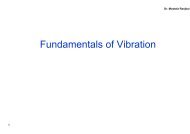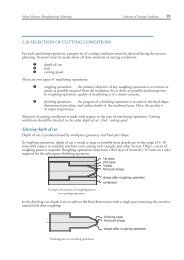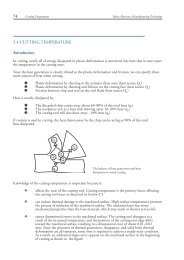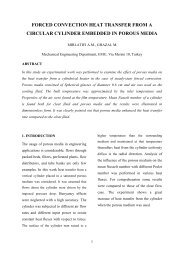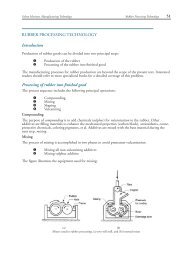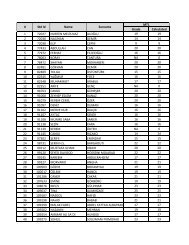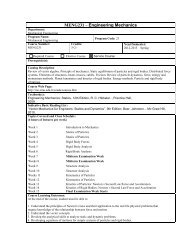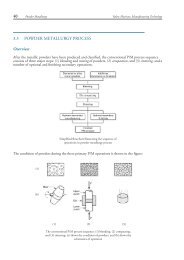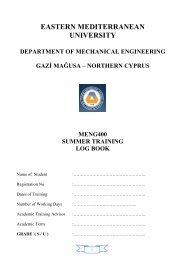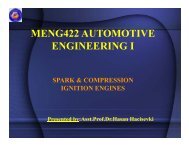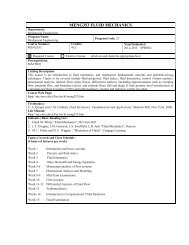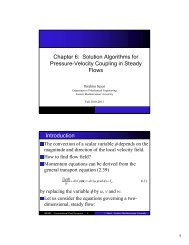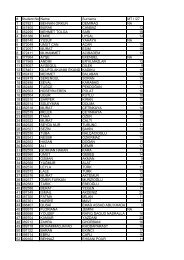Cutting Conditions In milling
Cutting Conditions In milling
Cutting Conditions In milling
You also want an ePaper? Increase the reach of your titles
YUMPU automatically turns print PDFs into web optimized ePapers that Google loves.
Valery Marinov, Manufacturing Technology<br />
Milling Operations<br />
Milling 105<br />
Owing to the variety of shapes possible and its high production rates, <strong>milling</strong> is one of the most<br />
versatile and widely used machining operations. The geometric form created by <strong>milling</strong> fall into three<br />
major groups:<br />
Peripheral Milling<br />
Plane surfaces: the surface is linear in all three dimensions. The simplest and most<br />
convenient type of surface;<br />
Two-dimensional surfaces: the shape of the surface changes in the direction of two<br />
of the axes and is linear along the third axis. Examples include cams;<br />
Three-dimensional surfaces: the shape of the surface changes in all three directions<br />
Examples include die cavities, gas turbine blades, propellers, casting patterns, etc.<br />
MILLING OF FLAT SURFACES<br />
<strong>In</strong> peripheral <strong>milling</strong>, also called plain <strong>milling</strong>, the axis of the cutter is parallel to the surface being<br />
machined, and the operation is performed by cutting edges on the outside periphery of the cutter. The<br />
primary motion is the rotation of the cutter. The feed is imparted to the workpiece.<br />
Several types of peripheral <strong>milling</strong> are shown in the figure,<br />
v slab <strong>milling</strong>, the basic form of peripheral <strong>milling</strong> in which the cutter width extends<br />
beyond the workpiece on both sides;<br />
v slotting, also called slot <strong>milling</strong>, in which the width of the cutter, usually called slotter,<br />
is less than the workpiece width, creating a slot in the workpiece. The slotter has<br />
teeth on the periphery and over the both end faces. When only the one-side face teeth<br />
are engaged, the operations is known as the side <strong>milling</strong>, in which the cutter machines<br />
the side of the workpiece;<br />
v straddle <strong>milling</strong>, which is the same as side <strong>milling</strong>, only cutting takes place on both<br />
sides of the work. <strong>In</strong> straddle <strong>milling</strong>, two slotters mounted on an arbor work together;<br />
v when the slotter is very thin, the operation called slitting can be used to mill narrow<br />
slots (slits) or to cut a workpart in two. The slitting cutter (slitter) is narrower than the<br />
slotter and has teeth only on the periphery.<br />
(a) (b) (c)<br />
Peripheral slab <strong>milling</strong> operation. Peripheral <strong>milling</strong> operations with narrow cutters: (a) slotting, (b)<br />
straddle <strong>milling</strong>, and (c) slitting.<br />
Some of the advantages of peripheral <strong>milling</strong> include,<br />
v More stable holding of the cutter. There is less variation in the arbor torque;<br />
v Lower power requirements;<br />
v Better work surface finish.




